‘One-by’ (or ‘1x’) bicycles with a single front chain-ring are increasingly popular.
Not so long ago, mountain bikes would all have triple front chainrings. Now, barely any can be found with more than one. The same is happening with road bicycles. The ‘half-step plus granny‘ triple is long dead, and even the racing double is seemingly threatened.
A single chainring crank paired with a wide-range rear cassette has some notional advantages over the more traditional setup with two or more front chain rings.
No need for a front derailleur, cable or lever. No additional chainring. No messed-up front shifts with the chain thrown into the bottom bracket area.
I bought one:
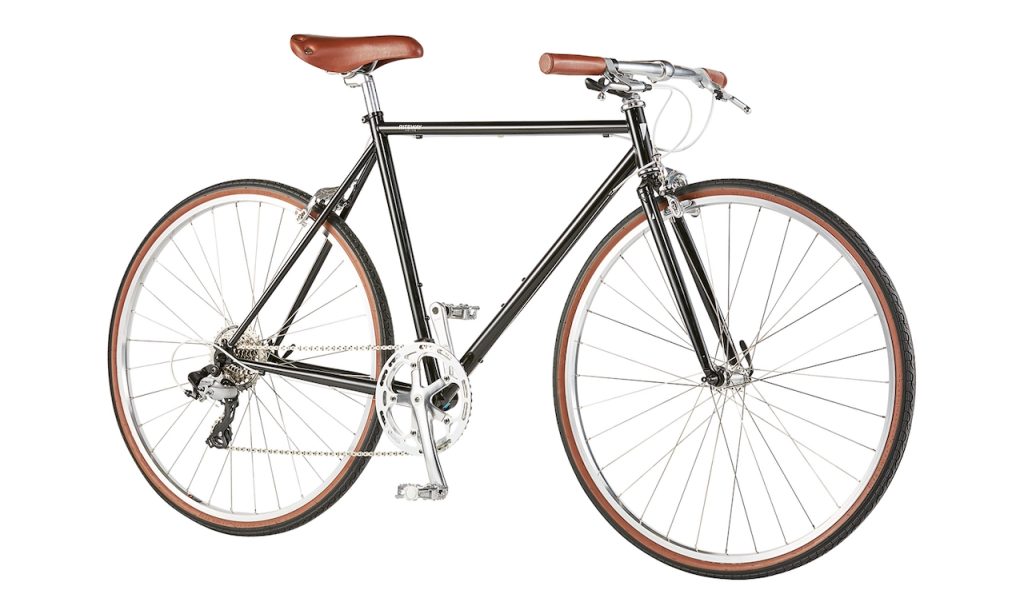
It’s a “Riteway Styles“.
I acquired it in 2021, when sourcing anything bicycle-related was quite tricky due to shipping and production issues related to the pandemic. This was almost an emergency purchase, as my Brompton had been stolen, and my remaining daily steed had experienced something of an issue:

My beloved 2004 Alps custom. Hand made in Japan and my constant daily companion. Until…
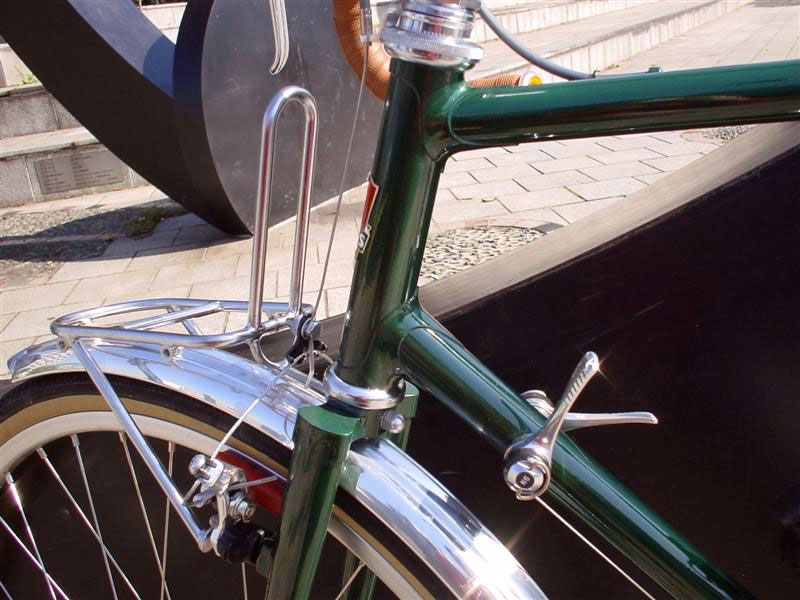
You see those lovely levers on the down tube, just south of the nice lugs? That photo was from 2004, when the bicycle was new.
Spot the difference in 2021…
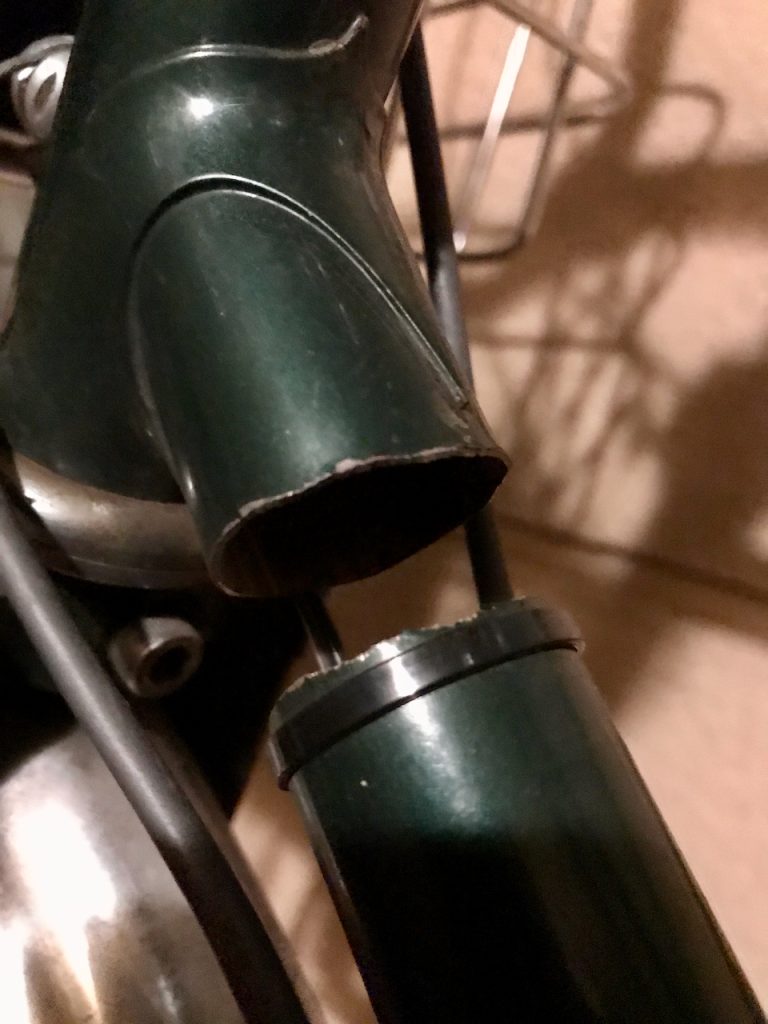
Hmm… well it gave me great service and I can’t complain. The bicycle was used daily for 17 years, rain or shine, and stored outside.
I had dropped the drops for an Soma Oxford “albatross” bar at some point, moved the shifters to thumb-mounts, and added a porteur rack:
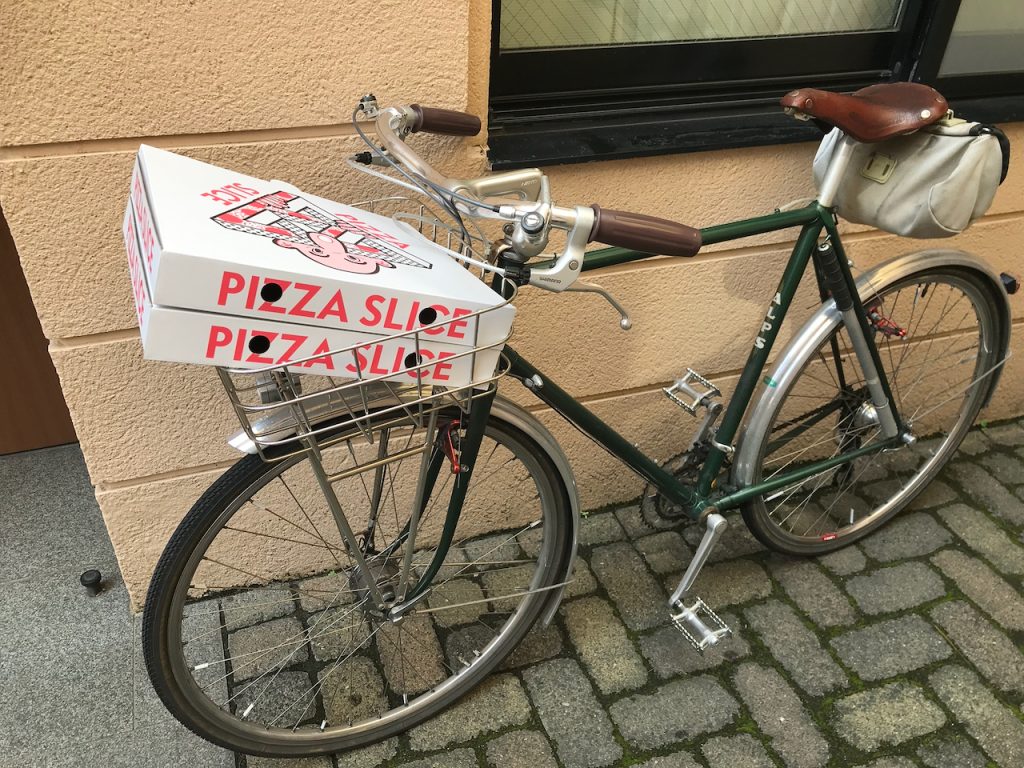
I suspect that the rack may have contributed to the down tube failure.
The original small Nitto rack (seen in the first two photos) attached to the top third of the forks. Allowing the curve of the fork to flex, as designed. The porteur rack attached to the dropouts, effectively making those forks a rigid triangle. The weight of the front load and flexing would be passed on to the frame…
Live and learn. The pizzas were excellent though.
At least when the frame failed, I survived. In fact, I rode the bicycle (slowly) home. Steel is a good material for bicycles. Riders of frames or forks with more catastrophic failure modes, take note.
The Riteway Styles had some important (to me features) such as a steel frame, quill stem, square-taper bottom bracket, rim brakes and 135mm rear spacing.
It arrived like this (although with a different saddle, which I replaced immediately):
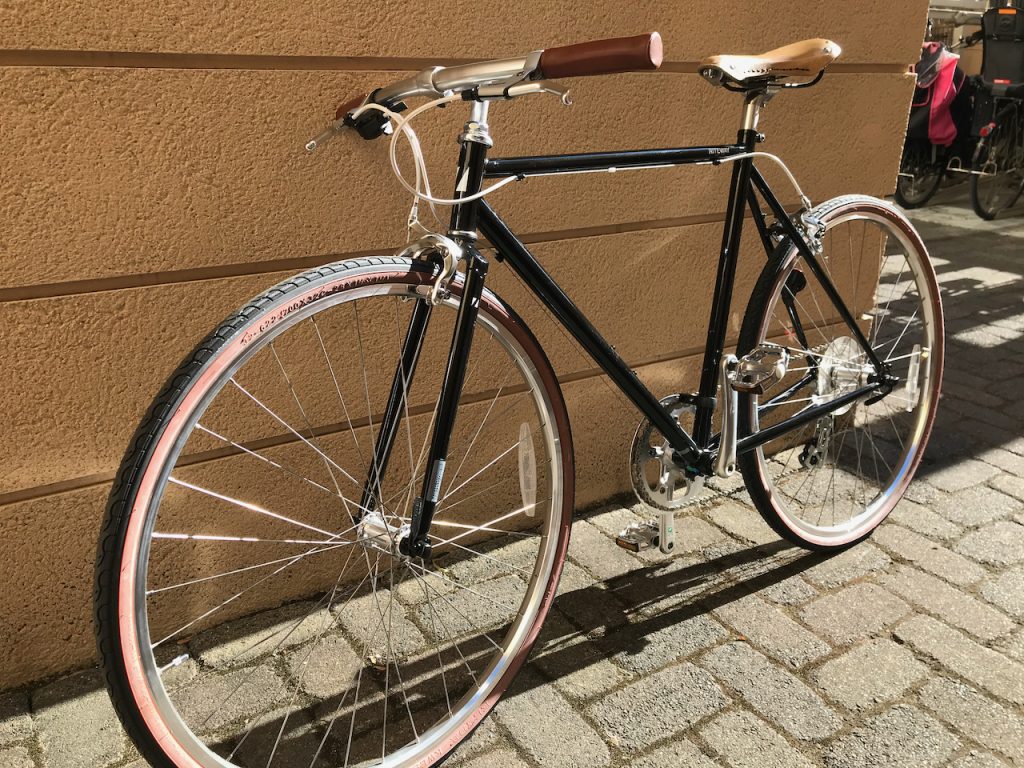
Not too obvious there, but it’s a single chainring up front, with an 8-speed cassette on the rear. There is a lot of good design in this bicycle, such as the long-reach brakes allowing fatter tyres, strong double-wall rims and use of common, non-proprietary standards which makes maintenance (and parts-swapping) easier and cheap.
One of the more baffling decisions though, was the choice of gearing. The 11-34T on the rear is fine. But it was paired with a massive 46T front chain ring. This is supposedly a town runabout bicycle. That top gear, 46×11, would challenge a fully-juiced Lance Armstrong. I found out that for the subsequent model year, Riteway changed the front chain ring to a slightly more sensible 44T.
On mine, I changed the crank to a spare Spécialités TA with a 38T chainring. I also replaced the rear cassette with a 10-speed 11-36T.
With non-proprietary standards and friction shifting, this is simple. Over the course of experimenting, I tried 8, 9 and 10-speed cassettes with 9, 10 and 11-speed chains – all with the same rear hub, crank, shifters and rear derailleur. They worked without issue. The Spécialités TA crank, designed in the 1960s, fits the square-taper bottom-bracket in place of the original crank, bought in the 2020s.
Current components which only work within their own ‘groupset’ and become obsolete in a few years are less versatile.
Anyway…
The improved gearing helped enormously. I re-used the thumb shifters from the old Alps bicycle, and the old Dura-Ace rear derailleur, too.
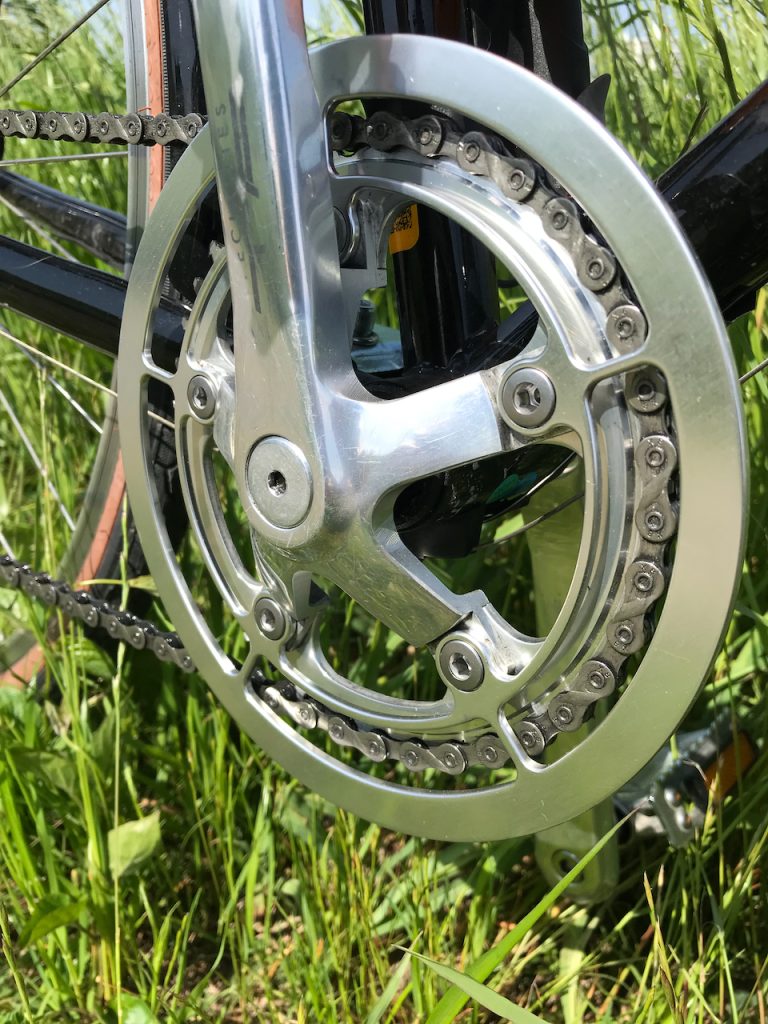
The TA Zephyr is a lovely crank, although the ‘hidden’ 5th bolt behind the drive-side crank arm is a bit of a pain. I’ve used the second chainring position here to add a chain guard. This is still a ‘1x’ setup.
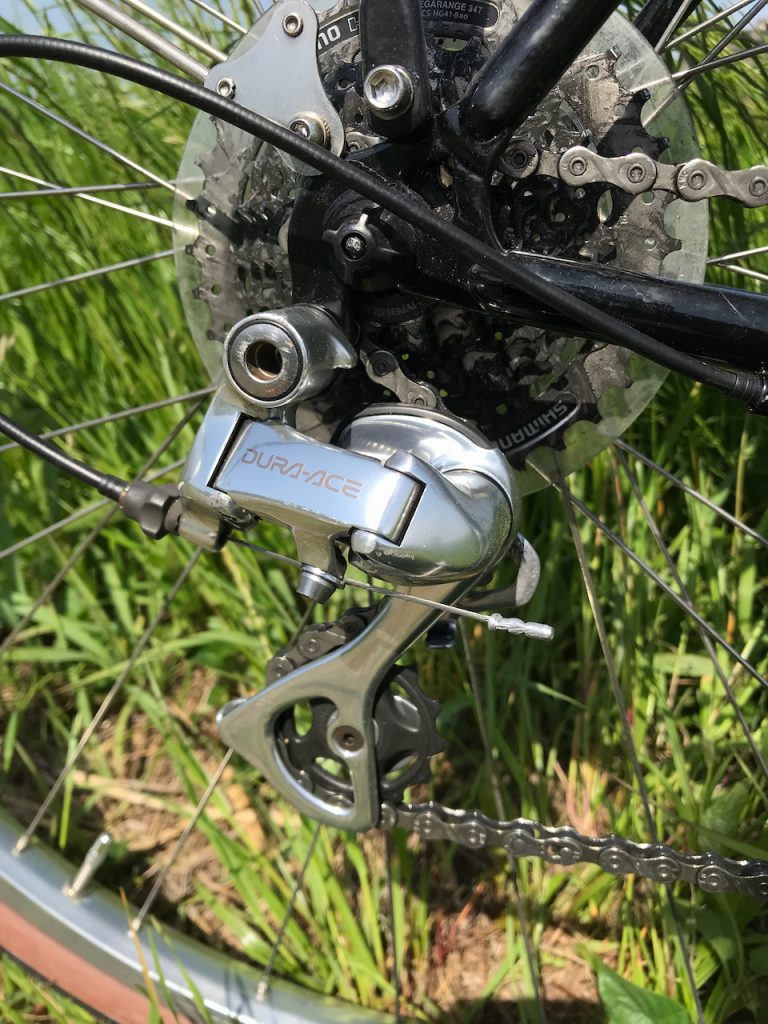
The Dura-Ace RD-7700GS from my Alps gets re-purposed. It may be 20 years old and it may supposedly only ‘support’ a 28T rear cassette, but with a bit of adjustment, it works perfectly in this setup. (I subsequently sold this derailleur, when I realised how much they fetch used)
Now this is how I rode the bicycle for some time:
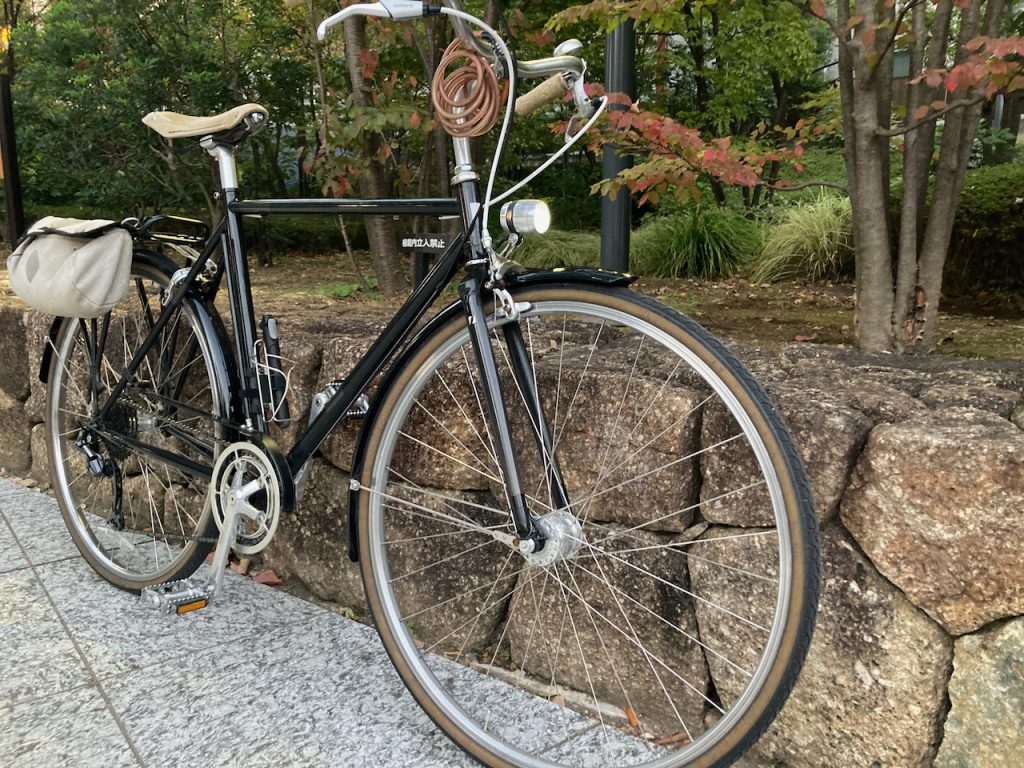
I kept the Riteway frame, but replaced the saddle, handlebar, stem, brake levers, shifter, crank, pedals, bell (all taken from the Alps) and added mudguards, a rack, and dynamo-powered front and rear lighting. The rear derailleur is now a Deore 9-speed.
The lights are fed from a Son 28 hub, which I built into a new front wheel:
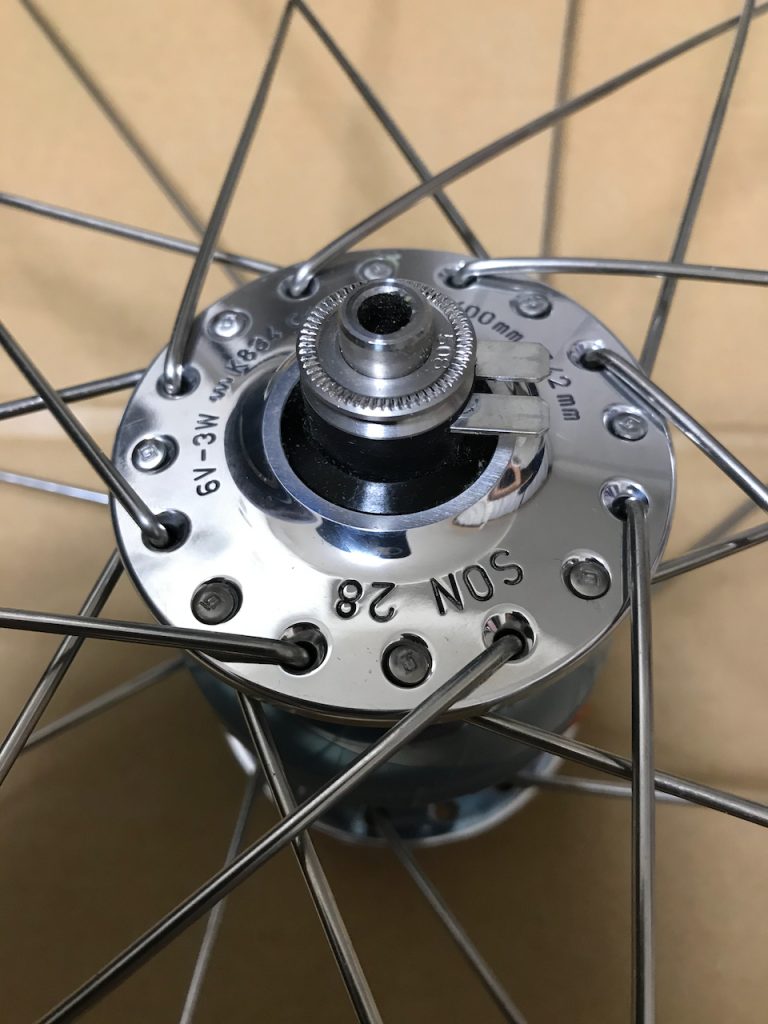
I couldn’t decide whether to use a mudguard-mounted tail light, which is easier to see from the side when you use panniers, or a rack-mounted one, which is larger and easier to see from afar.
So I used both…
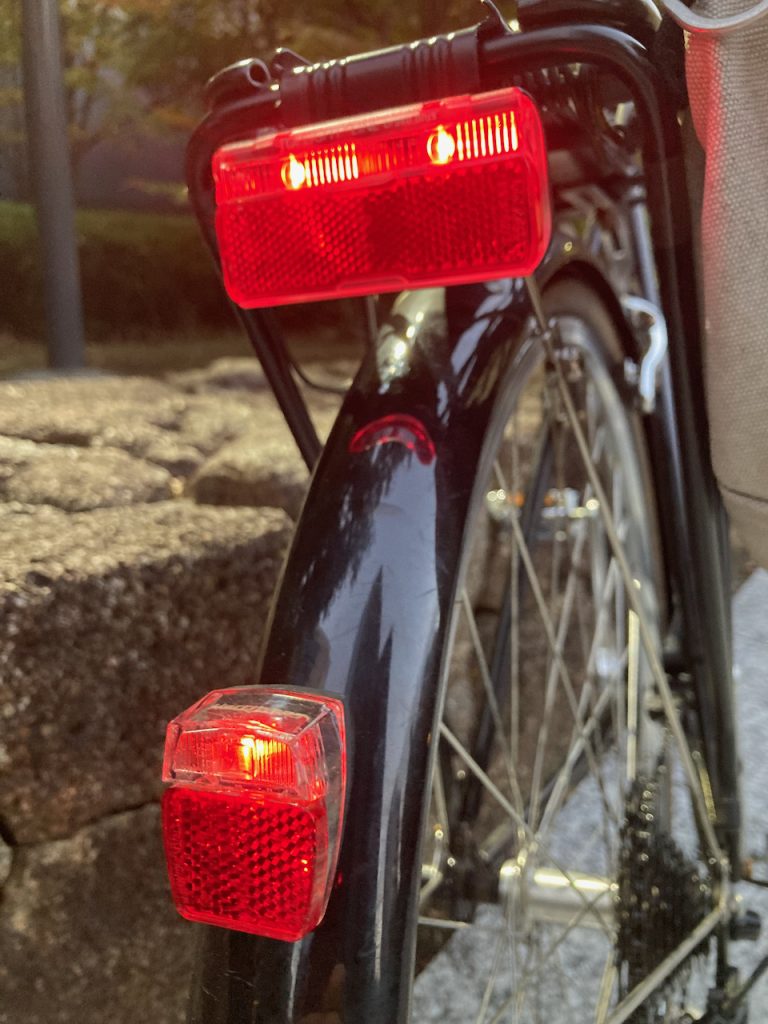
The rack-mounted one is a B&M Toplight Plus, which also acts as a brake light. Powered by the front dynamo hub, it senses when the (AC) current frequency from the generator decreases as you slow down. It then switches on (or boosts, if already on) the light.
The mudguard-mounted one is connected in parallel, with the wiring hidden under the mudguard. Both have stand lights, staying on for a few minutes after the bicycle comes to a stop. The Son dynamo hub has no problems powering these and the front B&M IQ-X headlight.
Back to the gearing…
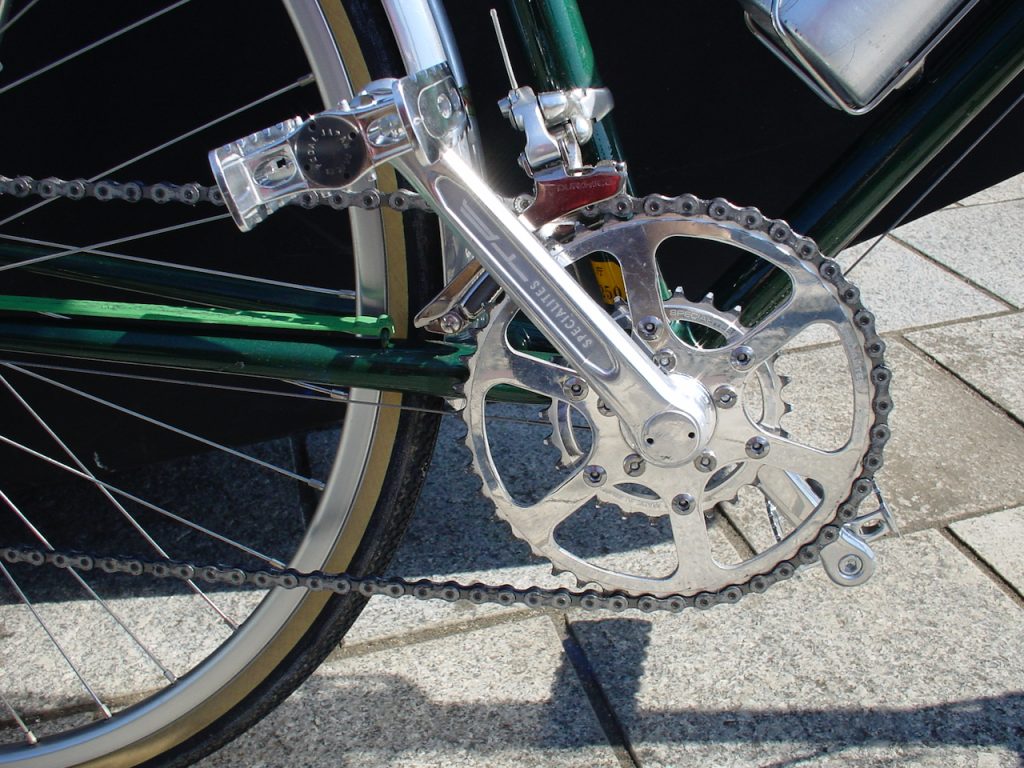
That’s another Spécialités TA crank, the one that came fitted to my old Alps. The legendary Cyclotouriste or Pro-5-Vis. It has an incredible range, facilitated by its tiny bolt-circle-diameter (BCD) of just 50.4mm. That fits chain rings from 26T to 54T. Lance would be proud.
This crank has a low tread width (or “Q”) meaning it’s very narrow between the crank arms. Unlike a lot of modern cranks, which tend to make you ride with your legs apart as though astride a horse.
A narrower “Q” is easier on your knees. This, combined with its overall quality and wide range, account for the crank’s enduring popularity among touring cyclists. It’s been in production for over half a century. Chain rings are still available, and they are machine-cut (not stamped) for extra longevity.
I still had this crank, having sold the broken Alps frame to someone who had the equipment to repair it. But the crank was still fine, and it had two nicely-spaced chain rings of 44T and 26T.
The Riteway though, was resolutely a 1x setup. It didn’t even have a cable stop on the downtube for a front derailleur. I had to improvise:

One of these, placed under the bottom-bracket, to accept two derailleur cables. And one of these:
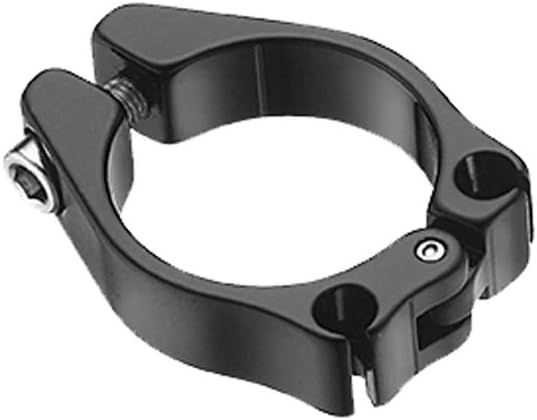
A down-tube mounted cable-stop. You can get them with one or two stops. I used this one, with two stops, and mounted it just ahead of the original single brazed-on cable stop.
For the front derailleur, I had a choice. Either this:
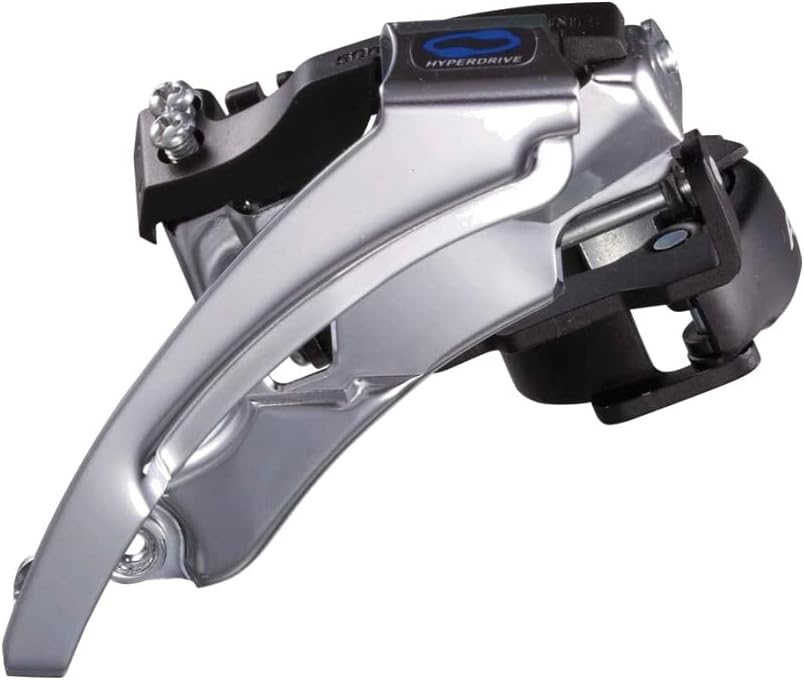
The Shimano FD-M310
Or this:
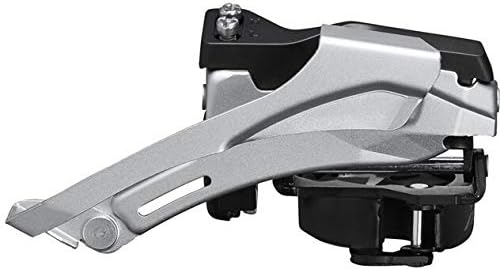
The Shimano FD-T3000
The only difference between these two is the cage. The FD-T is for double chainrings, the FD-M for triple chainrings. The cage is narrower on the double.
This is important if you have a low-Q crank, like the TA Cyclotourist. Although the FD-M would work, the wider cage would foul the inner side of the crank arm on up-shifts.
So I used the narrower FD-T3000.
Both of these have the same mechanical mechanism, which is a ‘top swing’ (in Shimano’s parlance) design. It permits a very low headroom above the cage, which is important for my purposes, as I wanted to fit a full-length chain guard:
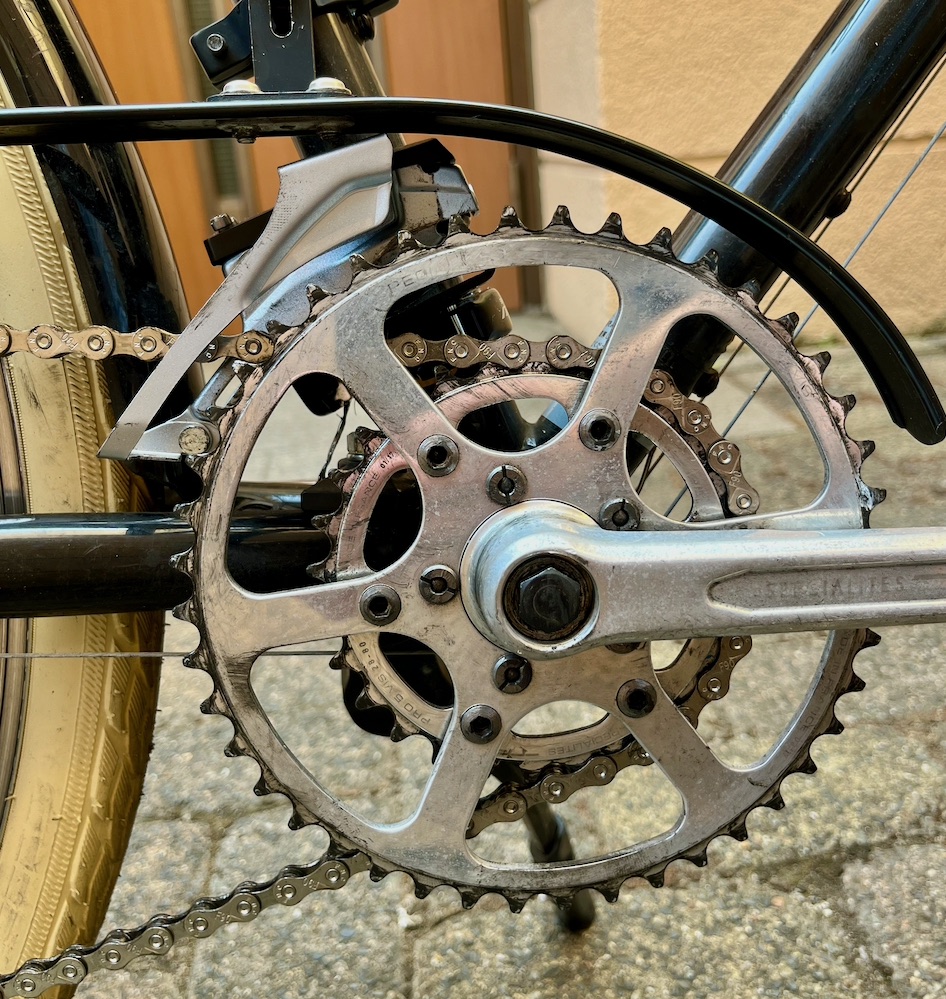
With a 1x, such a guard can be fitted very close to the chain ring as there is no derailleur. But a 2x means the chain guard must leave some room for the derailleur too. A lot of designs make this difficult, as the mechanism is vertical.
These Shimano offerings solve that problem. They also allow the cable to be either top pull, or down-pull. Like most things offered by Shimano, even the cheapest items, they benefit from good design.
Once fitted and cabled up to the original shift levers (also from my old Alps) they shifted perfectly. At least equal in performance to my old Dura-Ace components. Simple mechanisms, well executed. Cheap parts, like cheap spoons, can work just as well as expensive ones.
Speaking of which, I replaced the 10-speed 11-36T cassette with a 9-speed 11-36T one, as I found the 10 (and 11) speed chains to not last very long. The 9-speed cassette offers the same overall range, with slightly larger jumps between cogs, but allows use of a longer-lasting chain. I notice no difference whatsoever in actual riding or performance.
So… what then have we achieved?

The original gearing on the Riteway offered a range of 2.9m to 9.1m (that’s ‘metres per crank revolution’) which is a spread of 313% from low to high. But the high is way too high. And more importantly for me, the low is also too high!
The initial improvement (moving to an 11-36T rear cassette and a 38T front chain ring, still a ‘1x’ at this point) offered: 2.3m to 7.5m. Which is a larger 326% range, and while I’ve sacrificed a little on the high gear, the low is now much, much more usable.
The final configuration, with the 2x setup (using the same 11-36T rear cassette, but now a choice of 44T or 26T front chain rings) offers: 1.6m to 8.7m, or 544% range! (More than even the wildest 1x setup)
The low is even lower, making climbing hills easier. The high is extended, to stop spinning out on the way down. It was cheap to implement too. The new front derailleur, wire and cable-stops collectively costing less than £50.

There is value in sticking to traditional interchangeable parts.
And there is life in the front derailleur yet, I think.
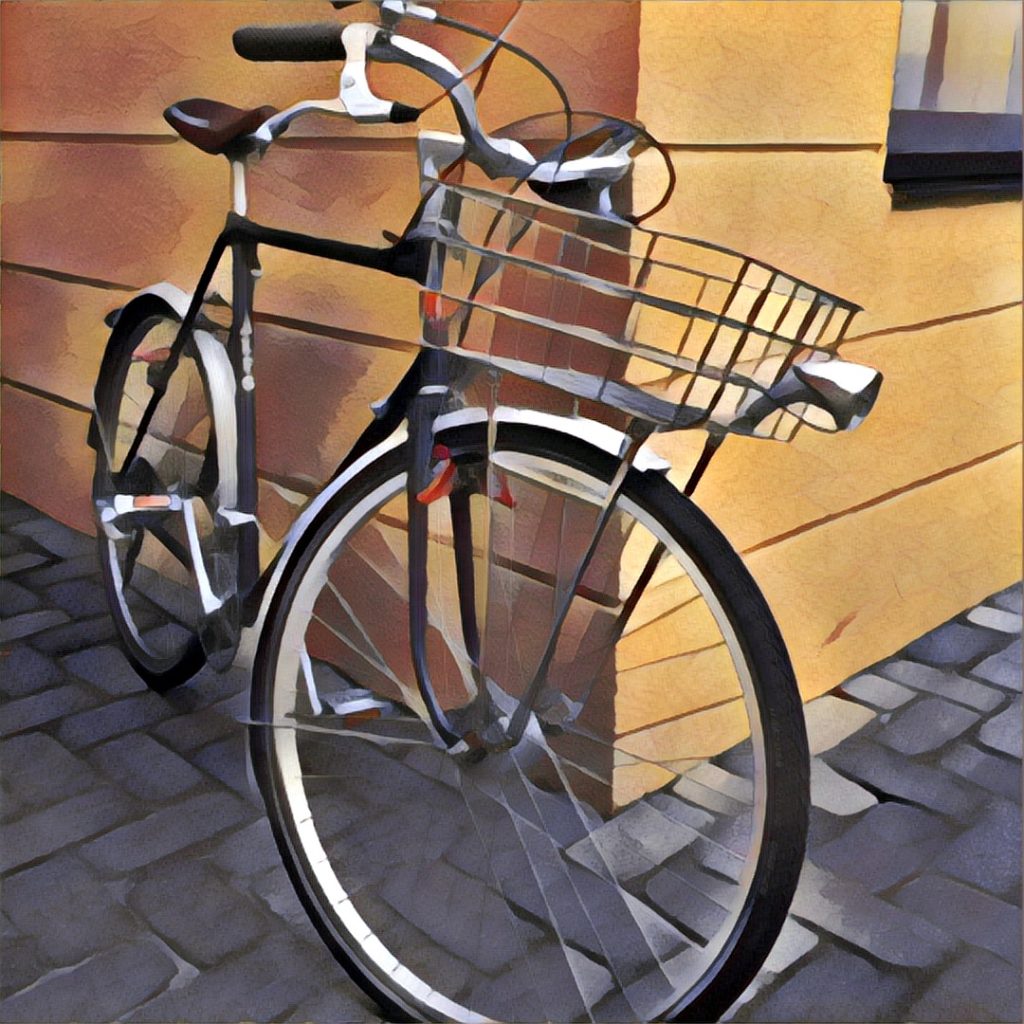


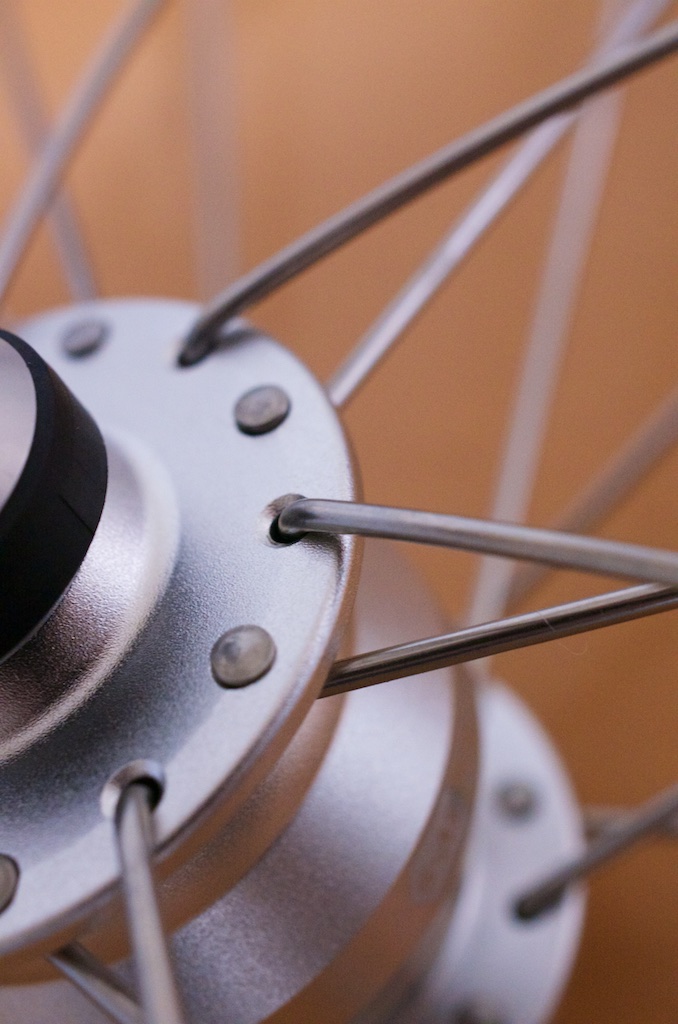
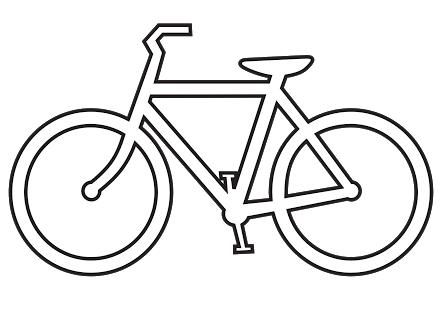
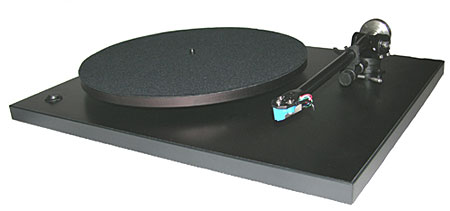
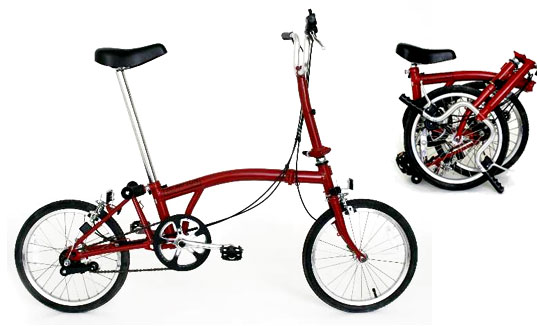
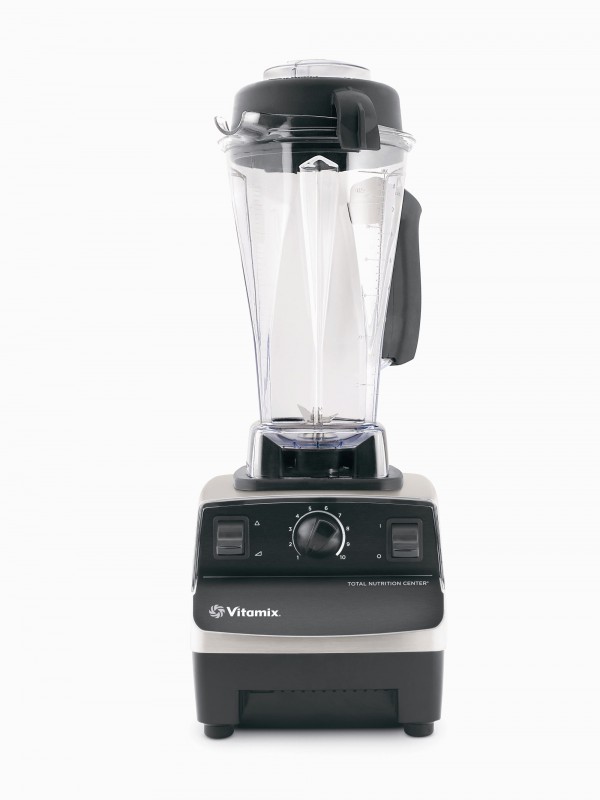

0 Replies to “The front derailleur is not dead”